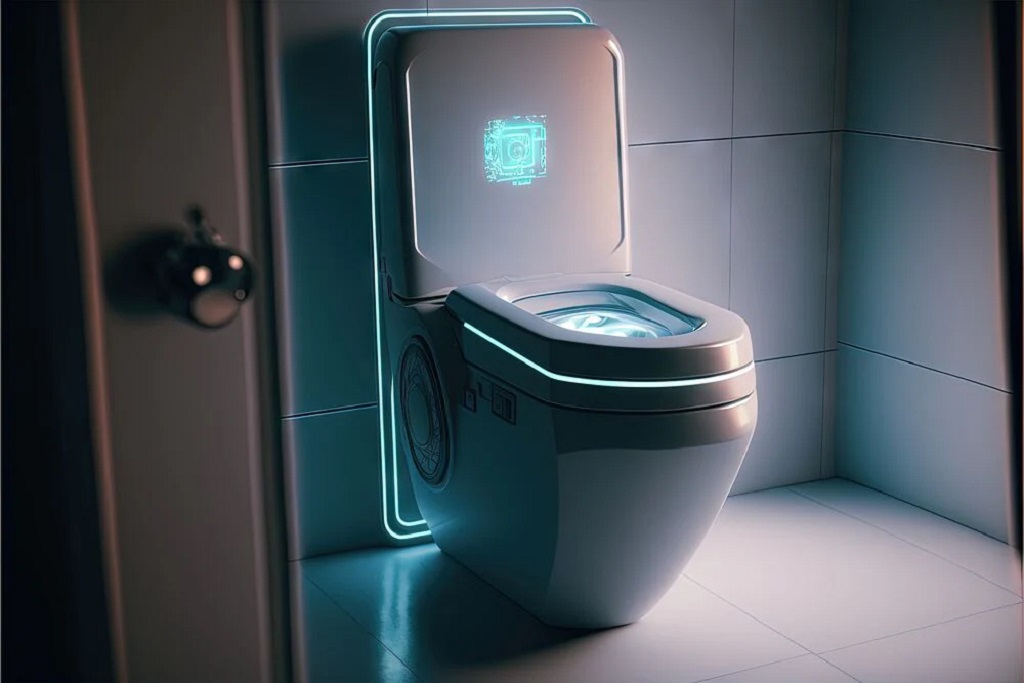스마트 변기를 이용해 가정에서 간편하게 장기간 건강체크를 할 수 있는 방안에 대해 마우저 일렉트로닉스(Mouser Electrronics)의 매트 캠벨(Matt Campbell)이 이야기 한다.
“스마트 변기로 장기적 건강체크 한 번에”
가정에서 샘플 채취 자동화 일상적인 검사 산소화
광학 센서 사용 다중 검사 스트립 색상 결과 해석
날마다 우리는 자신의 건강 상태에 관한 풍부한 정보를 떠내려 보내고 있다. 배설물을 검사한다는 생각이 비위에 거슬릴 수도 있지만, 이러한 검사는 감염병, 특정한 암, 당뇨병 같은 질병에 대한 정보를 제공할 수 있다. 코로나 팬데믹 당시에 과학자들은 오수로 바이러스를 검사하고 오수에 포함된 바이러스 양과 그 오수가 어디로부터 온 것인지를 지도 상에 표시함으로써 바이러스 유행을 모니터링할 수 있었다.
■ 첨단 변기 자동화로 장기적인 환자 모니터링 간소화
첨단 변기는 배설물 샘플링 장비를 포함할 수 있다. 예를 들어서 카메라를 사용해서 대변의 밀도나 소변 줄기를 모니터링할 수 있다. 미래의 변기는 대변 샘플을 채취하고 처리할 수도 있을 것이다. 가정에서 샘플 채취를 자동화함으로써 일상적인 검사를 좀더 흔쾌한 것으로 만들 수 있다. 또한 자동화는 장기적인 환자 모니터링을 간소화할 것이다. 환자가 특별히 애쓰지 않고도 자신의 의료진에게 규칙적인 업데이트를 제공할 수 있기 때문이다.
음식 알레르기가 있거나 특정한 음식에 민감한 환자들은 스마트 변기와 음식 일지를 결합함으로써 알레르기를 유발하는 음식에 대한 상세한 통찰을 얻을 수 있다. 과민성 대장 증후군(IBS)이 있는 많은 사람들이 어떤 음식이 원인인지 알기 위해서 식사 일지를 기록한다. 이 식사 일지가 앱으로 되어 있어서 변기가 액세스할 수 있다면, 섭취한 음식물과 배설물을 비교함으로써 그 사람의 몸이 특정한 음식에 어떻게 반응하는지에 관한 중요한 정보를 제공할 수 있다. 충분한 데이터가 쌓이면 이 애플리케이션이 유발 음식을 예측할 수도 있을 것이다.
지속적인 건강 모니터링은 건강과 피트니스에 대한 관심이 높은 소비자들에게 흥미로운 트렌드이기도 하다. 달리기 동호회나 사이클 동호회에서는 스마트 디바이스를 사용해서 자신의 활동을 추적하지 않으면 운동을 하지 않은 것이나 마찬가지라는 우스개 소리가 나오고 있다. 모든 달리기나 사이클 타기를 공유하고 싶어하는 사람들은 욕실에서의 활동과 개인적 기록을 소셜 피드를 통해서 팔로워들과 공유할 수 있기를 원할 수도 있다.
■ 광학 센서 이용 다양한 건강 지표 포착
스마트 변기의 머신 러닝 알고리즘이 사용자 프로파일을 빌드하고 각자의 행동 양식을 학습함으로써 표준에서 벗어나는 것을 판단하고 이것을 사용자에게 알려줄 수 있다. 머신 러닝 알고리즘과 함께, 전통적인 소변검사 스트립을 사용해서 즉석에서 믿을 만한 검사 결과를 제공할 수 있다.
소변검사 스트립은 시약을 함유함으로써 pH, 포도당, 단백질, 케톤, 혈액 같은 파라미터의 농도에 따라서 색깔이 변한다. 다중의 시약을 함유한 소변검사 스트립을 사용함으로써 단일 스트립으로 십여 가지 이상의 테스트를 할 수 있다. 광학 센서를 사용해서 다중 검사 스트립의 색상 결과를 해석함으로써 스마트 변기가 소변으로부터 다양한 건강 지표들을 빠르게 포착할 수 있다. 그러므로 사용자에게 요로 감염(UTI), 당뇨병, 신장 장애, 임신 같은 것들에 관한 징후를 조기에 알려줄 수 있다.
그런데 한 가지 과제는 유지관리를 어떻게 할 것이냐 하는 것이다. 스마트 변기가 제대로 작동하지 않을 때 사용자는 배관공을 부를 것인가? 아니면 IT 기사를 부를 것인가? 제조사들은 고객 지원, 훈련된 기사, 교체 부품을 갖춰야 할 것이다. 설치를 위해서 전기 공사가 필요할 수도 있다. 많은 집들의 욕실이 변기 가까이에 여분의 콘센트가 없기 때문이다.
■ 사용자 식별이 핵심
스마트 변기를 작동하기 위한 중요한 단계가 사용자 식별이다. 이를 위해서 스탠포드 대학의 연구원들이 내놓은 해결책은 스캐너를 사용해서 사용자들의 고유의 엉덩이 자국을 포착해서 사용자를 식별하는 것이다. 구체적인 것은 건너뛰도록 하겠다.
핵심은, 스마트 변기가 도입되기 위해서 가장 큰 해결 과제는 기술적이라기보다는 사회적이라는 것이다. 사람들이 자신의 가장 민감한 데이터를 분석하는 것에 동의해야 한다. 간단히 말해서 혐오스러움을 극복하는 것이 도입을 위해서 가장 먼저 넘어야 할 걸림돌이다.
데이터 프라이버시는 그 어느 때보다 중요해질 것이다. 스마트 변기가 수집하는 정보를 의료진과 공유하기 때문에 의료 정보와 마찬가지로 취급하고 보호해야 한다. 스마트 변기 사용자들이 원하는 또 다른 것은 민감한 데이터 침해나 자신의 욕실 습관에 기반한 표적 광고를 방지하는 것이다. 그러기 위해서는 스마트 변기의 무선 트랜스미터가 데이터베이스로 암호화된 정보를 전송해야 할 것이다.
사람들의 배설물을 지속적으로 모니터링하는 것에 따른 윤리적 문제 또한 제기될 것이다. 스마트 변기는 사용자가 감추고 싶어 하는 알코올, 처방약, 또는 불법 약물의 존재를 감지할 수 있다. 당신이 스마트 변기가 있는 어떤 집에 손님으로 갔는데, 스마트 기능을 끄고 전통적인 변기와 같게 하는 방법이 있을 것인가?
끝으로, 화장실에서 민감한 전자장치들은 최상의 작동을 유지하기 위해서 주기적으로 조정을 하고 청소를 해야 할 것이다. 화장실은 전자장치에 가혹한 환경이다. 그러므로 전기 배선 및 부품들을 밀봉해서 습기가 스며들지 않도록 해야 한다. 변기는 또한 균들이 서식할 수 있으므로 검사를 오염시키거나 잘못된 결과를 나타낼 수 있다.
■ 스마트 변기, 진단·건강 모니터링 한 번에 가능
우리는 자신의 배설물에 관해서 생각하는 것을 좋아하지 않는데, 정말로 낭비는 날마다 건강에 관한 귀중한 정보를 떠내려 보내는 것이다. 스마트 변기는 흥미로운 진단과 건강 모니터링을 가능하게 한다. 하지만 도입을 위해서 가장 큰 걸림돌은 사용자들이 자신의 가장 사적인 데이터를 분석하는 것에 동의해야 한다는 것이다.
Mouser의 또 다른 기사에서 스마트 변기가 어떻게 첨단 건강 모니터링을 가능하게 하는지 볼 수 있다.
※ 기고자
매트 캠벨(Matt Campbell) / 마우저 일렉트로닉스(Mouser Electrronics)
